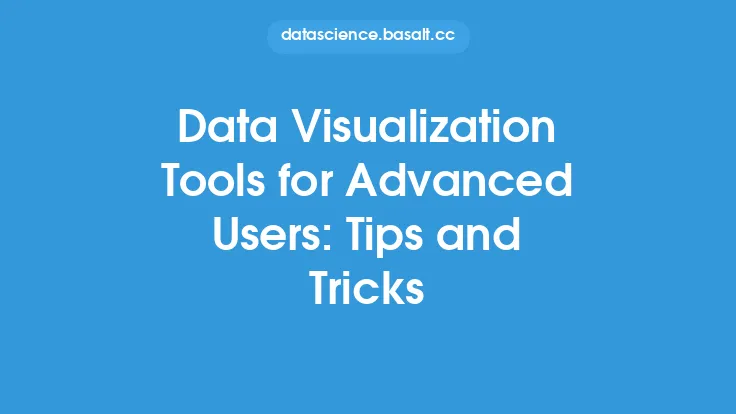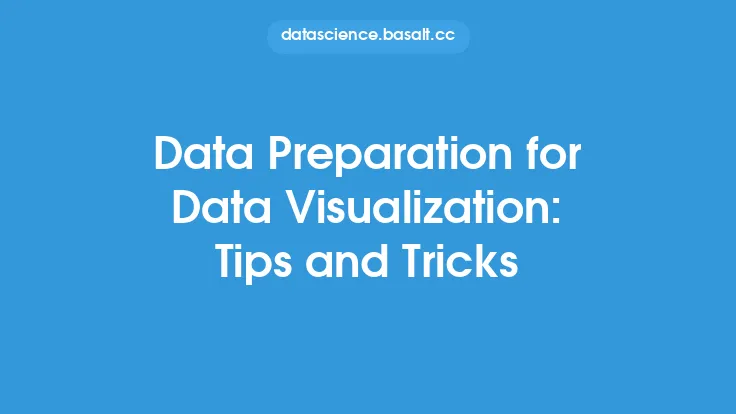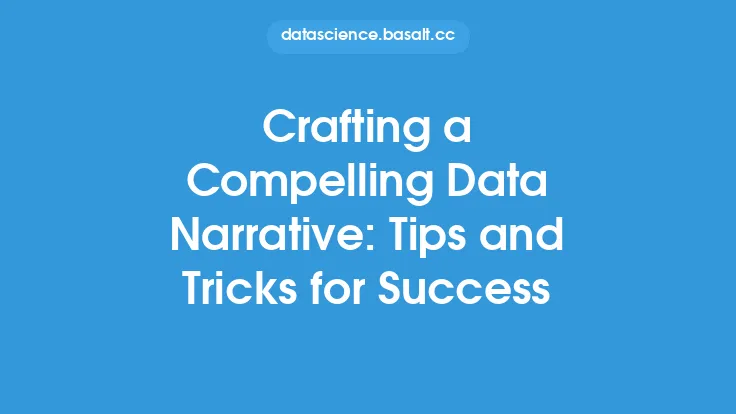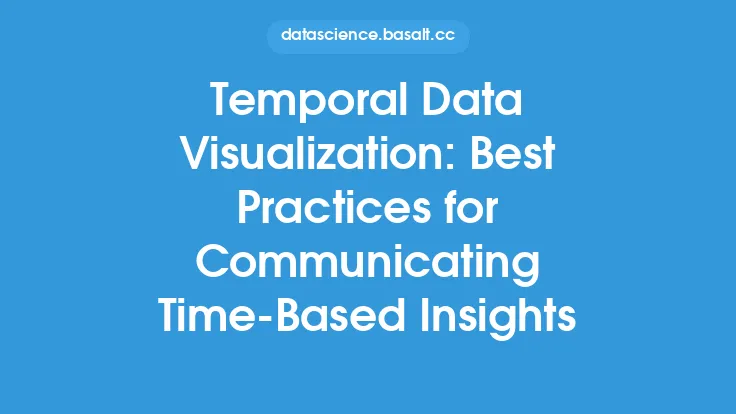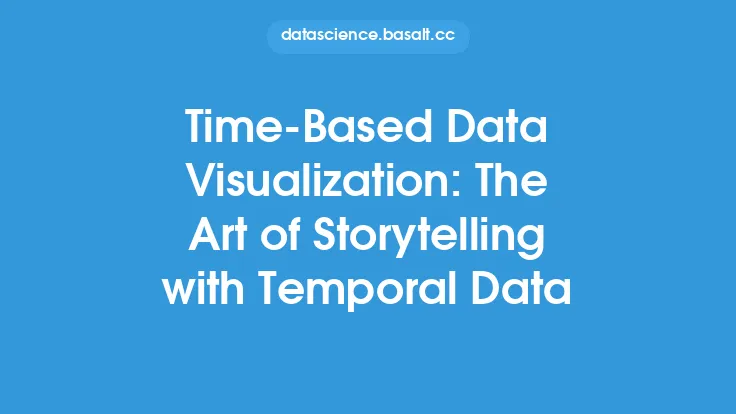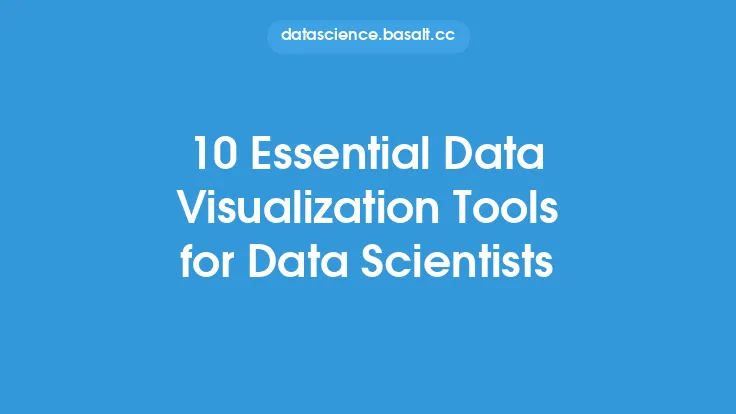As data scientists, we often encounter complex datasets that involve time as a critical component. Temporal visualization is the process of creating graphical representations of time-based data to facilitate understanding, analysis, and communication of insights. Mastering temporal visualization requires a deep understanding of the underlying data, the visualization tools and techniques, and the principles of effective communication. In this article, we will delve into the tips and tricks for data scientists to master temporal visualization, exploring the technical aspects, best practices, and common pitfalls to avoid.
Introduction to Temporal Visualization
Temporal visualization involves representing data that varies over time, such as time series data, event data, or data with temporal dependencies. The primary goal of temporal visualization is to reveal patterns, trends, and relationships in the data that are not immediately apparent from the raw data alone. Effective temporal visualization enables data scientists to identify anomalies, forecast future events, and communicate insights to stakeholders. To achieve this, data scientists must carefully consider the type of data, the visualization tools, and the audience's needs.
Choosing the Right Visualization Tools
The choice of visualization tool is critical in temporal visualization. Popular tools include Matplotlib, Seaborn, Plotly, and Tableau, each with its strengths and weaknesses. Matplotlib and Seaborn are ideal for creating static visualizations, while Plotly and Tableau are better suited for interactive visualizations. When selecting a tool, consider the type of data, the level of interactivity required, and the desired output format. For example, if you need to create a interactive dashboard, Plotly or Tableau might be a better choice. On the other hand, if you need to create a static visualization for a report, Matplotlib or Seaborn might be more suitable.
Best Practices for Temporal Visualization
To create effective temporal visualizations, data scientists should follow several best practices. First, ensure that the time axis is clearly labeled and formatted correctly. This includes using a consistent date format, displaying time zones, and avoiding ambiguous time representations. Second, use appropriate visualization types, such as line charts, area charts, or scatter plots, depending on the data characteristics. Third, consider using aggregation techniques, such as grouping or smoothing, to reduce noise and reveal underlying patterns. Finally, use color effectively to highlight important features, such as trends or anomalies, and avoid using too many colors, which can lead to visual overload.
Handling Time Zones and Date Formats
When working with temporal data, handling time zones and date formats is crucial. Time zones can significantly impact the interpretation of temporal data, and incorrect handling can lead to errors or misinterpretations. To avoid these issues, data scientists should ensure that all date and time values are stored in a consistent format, such as UTC, and that time zones are properly accounted for when performing calculations or visualizations. Additionally, consider using libraries, such as Pytz or Moment.js, which provide robust support for time zone handling and date formatting.
Advanced Techniques for Temporal Visualization
For more complex temporal visualization tasks, data scientists can employ advanced techniques, such as time-series decomposition, spectral analysis, or machine learning-based methods. Time-series decomposition involves breaking down a time series into its component parts, such as trend, seasonality, and residuals, to better understand the underlying patterns. Spectral analysis involves analyzing the frequency components of a time series to identify periodic patterns or anomalies. Machine learning-based methods, such as recurrent neural networks (RNNs) or long short-term memory (LSTM) networks, can be used to forecast future values or identify complex patterns in temporal data.
Common Pitfalls to Avoid
When creating temporal visualizations, data scientists should be aware of common pitfalls that can lead to misinterpretations or incorrect conclusions. One common pitfall is the use of inadequate or misleading visualization types, such as using a line chart to display categorical data. Another pitfall is the failure to account for time zones or date formats, which can lead to errors or inconsistencies. Additionally, data scientists should avoid over-plotting or using too many colors, which can lead to visual overload and make it difficult to interpret the visualization.
Case Studies and Examples
To illustrate the concepts and techniques discussed in this article, let's consider a few case studies and examples. For instance, suppose we have a dataset of daily stock prices, and we want to visualize the trend and seasonality of the data. We could use a line chart with a moving average to smooth out the noise and reveal the underlying trend. Alternatively, we could use a seasonal decomposition technique to separate the trend, seasonality, and residuals, and visualize each component separately. Another example might involve visualizing website traffic data to identify patterns and anomalies in user behavior. We could use a heatmap or a scatter plot to display the traffic data, and use clustering or machine learning-based methods to identify groups or patterns in the data.
Conclusion
Mastering temporal visualization is a critical skill for data scientists, as it enables them to extract insights and meaning from complex time-based data. By following best practices, choosing the right visualization tools, and employing advanced techniques, data scientists can create effective temporal visualizations that communicate insights and support decision-making. However, it's also important to be aware of common pitfalls and to carefully consider the audience's needs and the data characteristics. With practice and experience, data scientists can develop the skills and expertise needed to create informative and engaging temporal visualizations that unlock the full potential of time-based data.
